Department of Food Technology and Assessment
Head of the Department
dr hab. inż. Ewa Majewska
Tel. (0 22) 59 37 678
e-mail: ewa_majewska1@sggw.edu.pl
Secretariat
mgr inż. Małgorzata Kornatowska
tel. (0 22) 59 37 545
e-mail: malgorzata_kornatowska@sggw.edu.pl
e-mail: ktoz@sggw.edu.pl
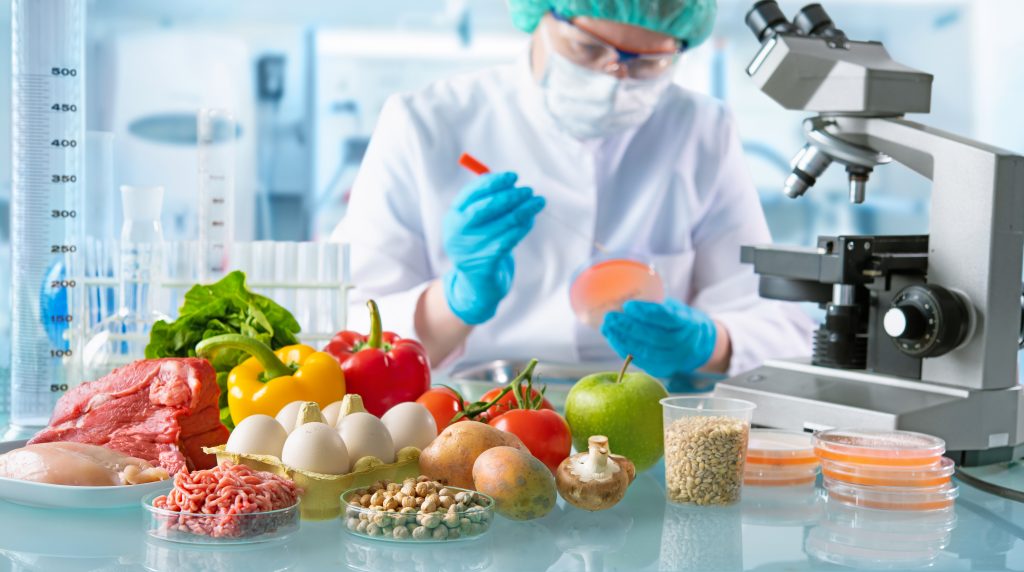
Pracownicy emerytowani
prof. dr hab., dr h.c. Adolf Horubała
prof. dr hab. dr h.c. Andrzej Pisula
prof. dr hab. Alicja Ceglińska
prof. dr hab. inż. Mieczysław W. Obiedziński
prof. dr hab. Tadeusz Haber
prof. dr hab. Marta Mitek
prof. dr hab. Stanisław Zmarlicki
dr inż. Andrzej Gasik
dr inż. Krzysztof Leszczyński
dr hab. inż. Antoni Pluta, prof. SGGW
dr hab. inż. Elżbieta Dłużewska
Doktoranci
Division of Meat Technology
Employees
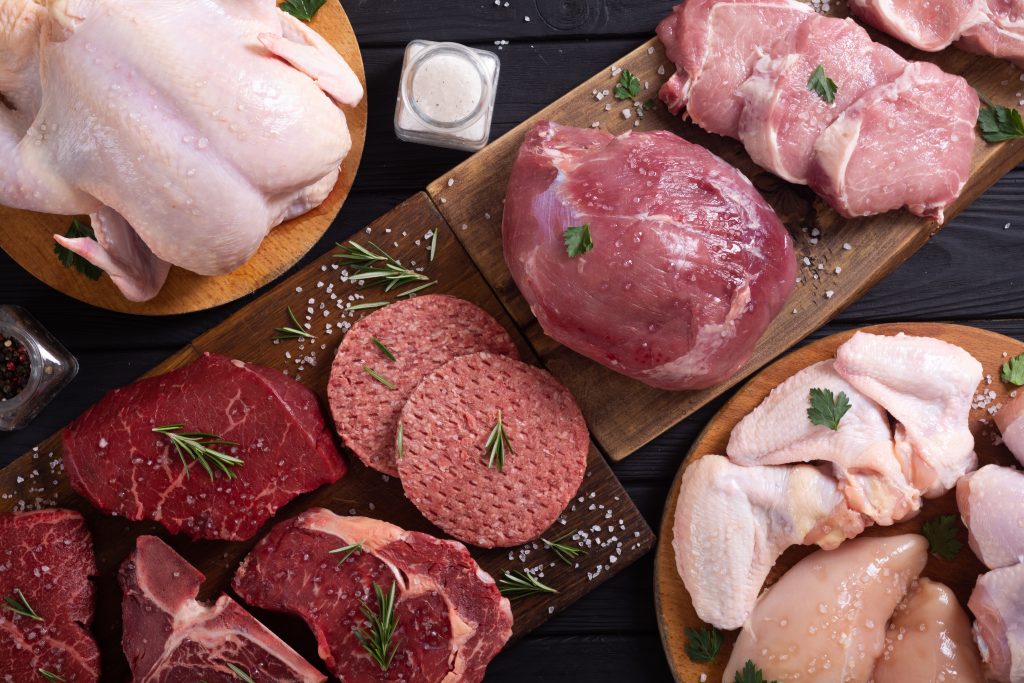
Research
Scientific research carried out at the Division of Meat Technology covers a wide spectrum of thematic areas, in line with the latest research trends in the field of meat technology, and responding to the needs of the modern meat industry in terms of shaping and quality assessment, including the safety of various meat products.
Scientific activity of the Division of Meat Technology includes:
⦁ research on the influence of in vivo factors (including genetic and nutritional factors) and post-mortem factors on the quality of carcasses and meat of slaughter animals, including the frequency of quality defects,
⦁ research on the influence of recipes and production technology on the quality of meat products, including the use of new additives in the production of meat products and the creation of new products, including from the functional food segment (bioactive additives) and convenient food (e.g. using freeze-drying),
⦁ research on the development of rapid analytical techniques for assessing the quality of meat and meat products, including 2D vision techniques and the use of modern 3D scanners,
⦁ research on the durability and safety of meat and meat products, including the use of high hydrostatic pressure technology to extend the shelf life of meat and meat products and the use of innovative packaging methods.
Didactics
Home made cheeses and processed meat products
Honey and other bee products
Marketing and basic processing of raw materials of animal origin
Product quality assessment and logistics
Protection of intellectual property
General food technology
Basics of gastronomic technology
Copyright and patent protection
Processing of organic animal raw materials
Product design
Propaedeutics of the food industry
Processing of raw materials of plant and animal origin
Engineering seminar
Master’s seminar
Raw materials of plant and animal origin
HACCP safety system in the food industry
Computer techniques in the preparation and presentation of results
Technology and hygiene of food of animal origin
Meat technology
Technological design of food industry plants
Commodity science of agricultural products of animal origin
Commodity science of raw materials and products of the food industry
Modern technologies
Processing use of fish and marine invertebrates
Cooperation with the environment
The employees of the Division of Meat Technology undertake cooperation with both scientific units as well as numerous economic entities of the meat industry and those cooperating with the meat industry (including producers of food additives, packaging, etc.). Cooperation with the economic environment includes:
⦁ consultations on meat industry technology and methods for testing the quality of meat and meat products,
⦁ development of meat product production technologies, including the use of new technological additives and innovative processing technologies (including high-pressure technology) and packaging (vacuum packaging, SKIN, MAP),
⦁ technical and technological assessment of meat plants,
⦁ conducting analyses of the physical and chemical properties of meat from large slaughter animals, poultry and meat products.
As part of the research and service activities, the Division of Meat Technology cooperates, among others with the Institute of High Pressure Physics of the Polish Academy of Sciences, Amco Sp. z o.o., Chr. Hansen Poland Sp. z o.o., CID LINES Sp. z o.o., Animex Foods sp. z o.o., DOEHLER Sp. z o.o., Drobimex Sp. z o.o., SuperDrob S.A., Exeller® Polska Sp. z o.o. and the National Poultry Council.
Apparatus
Wyposażenie technologiczne:
Zakład Technologii Mięsa jest wyposażony w kompletne linie technologiczne pozwalające na produkcję w skali laboratoryjnej wielu asortymentów przetworów mięsnych, w tym wędzonek, kiełbas, produktów blokowych, wędlin podrobowych, konserw oraz różnych wyrobów garmażeryjnych. Na wyposażeniu Zakładu Technologii Mięsa znajdują się m.in.: wilki, tenderyzator, mieszałki do farszu, kutry, nadziewarki, klipsownice, formy do wyrobów blokowych, nastrzykiwarka, masownica, aplikator do wędzonek, komora wędzarniczo-parzelnicza, piec konwekcyjno-parowy, Thermomix, bemar, zamykarka do puszek, autoklaw. Posiadamy również liofilizator oraz komorę ciśnieniową pozwalającą na poddanie próbek działaniu ciśnienia do 500 MPa. W Zakładzie Technologii Mięsa znajduje się również linia do pakowania mięsa i produktów mięsnych obejmująca: krajalnicę, maszynę do pakowania w technologii MAP, SKIN i pakowania próżniowego, analizatory szczelności opakowań, analizatory gazów (O2/CO2) oraz urządzenie do badania grubości folii opakowań. Dostępne są również sklepowe lady chłodnicze umożliwiające przechowywanie produktów w warunkach imitujących przechowywanie w realnych warunkach dystrybucji.
Wyposażenie badawcze:
Zakład Technologii Mięsa wyposażony jest w urządzenia laboratoryjne pozwalające na ocenę jakości tusz i mięsa zwierząt rzeźnych oraz produktów mięsnych, w tym m.in. stanowiska do komputerowej analizy obrazu 2D, skaner 3D, kamerę termowizyjną, mikroskop metalograficzny, kolorymetry odbiciowe, spektrofotometry, teksturometr, pH-metry, konduktometry, stanowiska do oznaczania podstawowego składu chemicznego (wody metodą suszarkową, białka metodą Kjeldahla, tłuszczu metodą Soxhleta), aparat FoodScan2 do szybkiej analizy składu chemicznego mięsa i produktów mięsnych, urządzenie do pomiaru aktywności wody, wyparkę, liofilizator, homogenizatory, wirówki, łaźnie wodne. Posiadamy również urządzenie do szybkiej analizy jakości jaj.
Division of Milk Technology
Head of the Division
dr hab. inż. Monika Garbowska, prof. SGGW
Tel. (22) 59 37 670
e-mail: monika_garbowska@sggw.edu.pl
Employees
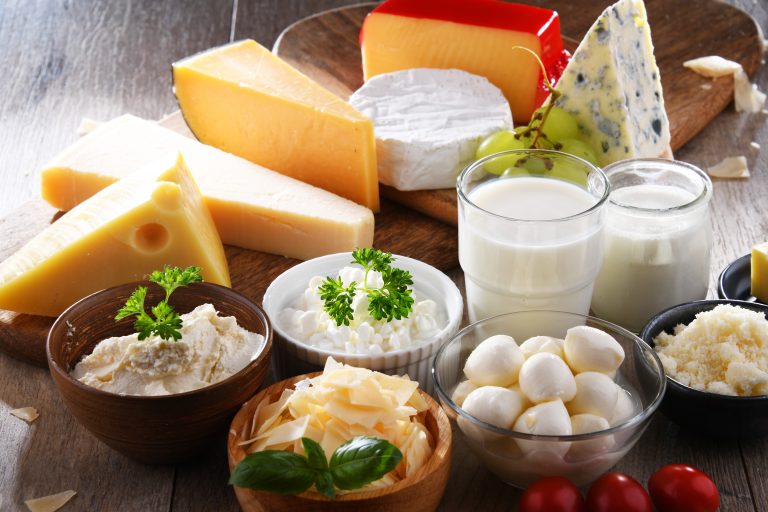
Research
Scientific activities of the employees of the Division of Milk Technology include:
⦁ research on technological factors and the influence of biologically active substances on selected quality features and safety of milk and dairy products (unfermented and fermented);
⦁ research on the production and analysis of dairy products, as well as on the use of lactic acid bacteria, propionic acid bacteria, including potentially probiotic strains in food production;
⦁ research on the production of plant-based milk substitutes and dairy products obtained from soy, oats, millet, sorghum, wheat, legume seeds (e.g. beans);
⦁ research on the production and industrial use of bacterial cellulose; these include, among others: searching for strains that effectively produce this biopolymer, using food industry waste as alternative substrates for acetic bacteria to produce bacterial cellulose, developing a cheese recipe in which part of the milk fat is replaced with bacterial cellulose, using bacterial cellulose as a carrier of natural substances with antimicrobial activity;
⦁ research on the occurrence and characteristics of Cronobacter spp. in food products;
⦁ research on the possibility of using additional starters of lactic acid bacteria to increase the content of biologically active substances, e.g. bioactive peptides and limiting the formation of unfavourable biogenic amines in ripening rennet cheeses;
⦁ economics and organisation of a food company – issues related to the economic analysis of enterprises, enterprise management, human resources management and corporate social responsibility.
Didactics
Zajęcia prowadzone dla Studentów kierunku Technologia żywności i żywienia człowieka:
Bakterie mlekowe w technologii żywności
Domowy wyrób serów i wędlin
Ekonomika i organizacja przedsiębiorstwa żywnościowego
Etyka biznesu
Kreatywne myślenie
Mikrobiologia i biotechnologia w mleczarstwie
Ocena jakości produktów i logistyka
Ogólna technologia żywności
Praca dyplomowa
Projektowanie produktu
Propedeutyka przemysłu spożywczego
Przedmiot specjalizacyjny – projekt
Przetwórstwo surowców roślinnych i zwierzęcych
Seminarium dyplomowe
Seminarium inżynierskie
Seminarium magisterskie
Surowce pochodzenia roślinnego i zwierzęcego
Techniki analityczne w technologii mleczarskiej
Technologia mleka
Technologiczne projektowanie zakładów przemysłu spożywczego
Towaroznawstwo surowców i produktów przemysłu spożywczego
Współczesne technologie
Wybrane zagadnienia z technologii mleczarskiej
Zarządzanie przedsiębiorstwem żywnościowym
Zarządzanie zasobami ludzkimi
Zajęcia prowadzone dla Studentów kierunku Towaroznawstwo w Biogospodarce:
Bakterie mlekowe w technologii żywności
Podstawy zarządzania
Seminarium inżynierskie
Towaroznawstwo żywności
Towaroznawstwo produktów rolniczych pochodzenia zwierzęcego
Zajęcia prowadzone dla Studentów kierunku Bezpieczeństwo żywności:
Bakterie mlekowe w technologii żywności
Technologia i higiena żywności pochodzenia zwierzęcego
Zajęcia prowadzone dla Studentów kierunku Biotechnologia:
Kultury starterowe w przemyśle spożywczym
Podstawy higieny produkcji żywności
Probiotyki i prebiotyki
Technologia żywności probiotycznej
Wykorzystanie bakterii mlekowych w przemyśle spożywczym
Zajęcia prowadzone dla Studentów kierunku Ekologiczne rolnictwo i produkcja żywności (zajęcia w języku angielskim):
Processing of organic animal raw materials
Zajęcia prowadzone dla Studentów kierunku Zootechnika:
Obrót i podstawy przetwórstwa surowców pochodzenia zwierzęcego
Cooperation with the environment
Cooperation with the business and industry environment include:
⦁ consulting and opinions on the production, safety, quality and durability of milk and dairy products and their plant substitutes,
⦁ testing the quality and durability of milk and dairy products and their plant substitutes,
⦁ economic analysis of enterprises, enterprise management, human resources management,
⦁ conducting and co-implementing research and R&D projects.
Cooperation with scientific units, including:
⦁ Department of Microbial Biochemistry of the Institute of Biochemistry and Biophysics of the Polish Academy of Sciences in the scope of implementing the project entitled “Characterization of genetic determinants of propionic acid biosynthesis and analysis of their functionality in selected lactic acid bacteria” carried out in the period 09.01.2019 – 08.01.2022 (2018/29/B/NZ9/02278).
Apparatus
Stephan apparatus for making cream cheese
autoclaves
laboratory homogenizer
cryoscop
laboratory pasteurizer
Brookfield viscometer with accessories
optical microscopes
ultrasonic washer
vacuum packing machine
ultrasonic processor
Vis-UV spectrophotometer
Brookfield texturometer
laboratory centrifuges
milk skimming centrifuge
apparatus for measuring water activity
liquid chromatography apparatus with accessories
gas chromatography apparatus with accessories
SDS electrophoresis kit
Kjeldahl apparatus for protein content determination
Kit for determining the fat content by the butyrometric method
thermostats
laboratory dryers
inkubator CO 2 z płaszczem powietrznym
Division of Food Quality Assessment
Head of the Division
dr hab. inż. Rafał Wołosiak, prof. SGGW
Tel. (22) 59 37 677
e-mail: rafal_wolosiak@sggw.edu.pl
Employees
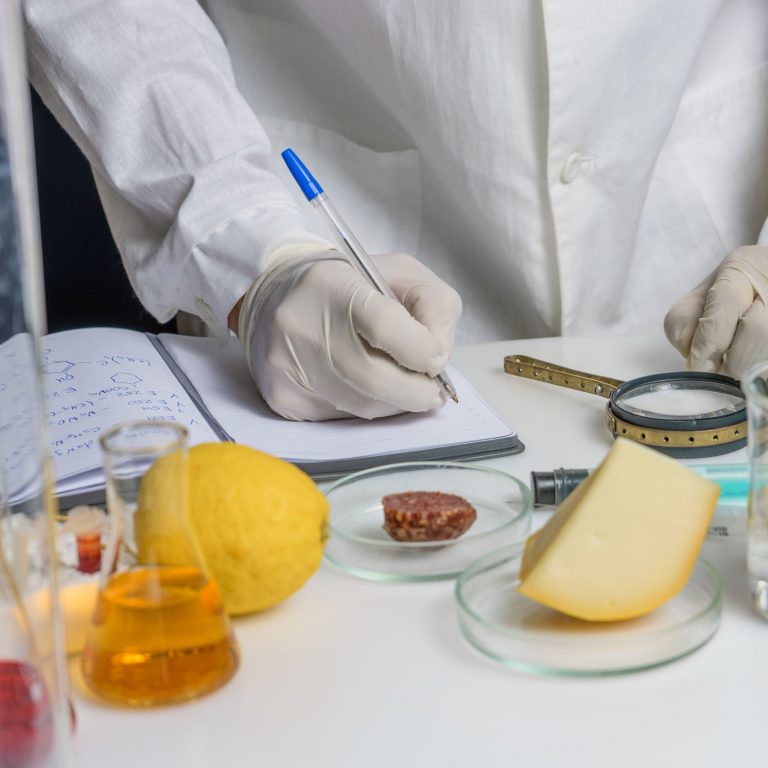
Research
- Research on the mechanisms of shaping the quality characteristics of raw materials and products during storage and in the processing process, with particular emphasis on the bioactivity of food and the presence of natural antioxidants.
- Research on markers of food quality and safety and other compounds important in the verification of food adulterations.
- ⦁ Testing the content and interaction of biologically active food ingredients (including polyphenols, vitamins, carotenoids).
- Development, improvement and validation of food testing methods using instrumental techniques (gas chromatography, liquid chromatography, gas chromatography coupled with mass spectrometry, liquid chromatography coupled with mass spectrometry, spectrophotometry, spectrofluorimetry, flame photometry).
- Research on the influence of enzymatic and physical modifications on the properties of proteins and starch.
- Analysis of the composition of fatty acids, trans isomers, n-3 and n-6 fatty acids, conjugated linoleic acid (CLA), sterols and their oxidation products.
- Analysis of volatile compounds and creation of food aroma profiles.
- Development and improvement of methods for monitoring food quality and safety parameters.
Didactics
Zajęcia prowadzone dla Studentów kierunku Technologia żywności i żywienia człowieka:
- Analiza i ocena jakości żywności
- Prawo żywnościowe
- Technologiczne projektowanie zakładów przemysłu spożywczego
- Współczesne trendy w analityce
- Technolog żywności a współczesny przemysł
- Zarządzanie w sytuacjach kryzysowych w przemyśle spożywczym
- Metody analityczne w badanuiach żywności
- Analiza sensoryczna
- Wybrane aspekty jakości żywności
- Zagrożenia żywności
- Zapewnienie jakości i bezpieczeństwa w przemyśle spożywczym
- Przedmiot specjalizacyjny – projekt
- Praca dyplomowa
- Seminarium dyplomowe
- Seminarium magisterskie
Zajęcia prowadzone dla Studentów kierunku Towaroznawstwo w biogospodarce:
- Podstawy prawa
- Zarządzanie bezpieczeństwem żywności
- Metody oceny produktów spożywczych
- Praca dyplomowa
Zajęcia prowadzone dla Studentów kierunku Bezpieczeństwo żywności:
- Analiza i ocena jakości żywności
- Prawo żywnościowe
- Toksykologia żywności
- Instrumentalne metody oceny bezpieczeństwa i jakości żywności
- Zagrożenia chemiczne i fizyczne w żywności
- Autentyczność i identyfikowalność żywności
- Praca dyplomowa
- Seminarium dyplomowe
Zajęcia prowadzone dla Studentów kierunku Biotechnologia:
- Analiza produktów i procesów biotechnologicznych
Zajęcia prowadzone dla Studentów kierunku Ekologiczne rolnictwo i produkcja żywności (zajęcia w języku angielskim):
- Hazards for Food Safety
Fakultety:
- Alergeny w żywności
- Przeciwutleniacze naturalne i syntetyczne w żywności
- Walidacja metod analitycznych
- Systemy zarządzania w laboratorium
- Bioactive food components
- Positive and negative food substances
- Białka i węglowodany – aspekty żywieniowe i technologiczne
- Nowe metody w analizie żywności
Cooperation with the environment
- Advice and opinions on the compliance of products with the requirements of food law.
- Preparation of expert opinions on food, its ingredients and contaminants.
- Instrumental marking of food ingredients and impurities and their changes under the influence of various technological processes or in terms of the presence of adulterations; the scope of research concerns mainly such compounds as:
- polyphenols, vitamins, carotenoids and other bioactive compounds,
- composition of fatty acids, trans isomers, n-3 and n-6 fatty acids, conjugated linoleic acid (CLA),
- phytosterols and cholesterol and their oxidation products,
- allergens,
- volatile compounds profiles,
- polycyclic aromatic hydrocarbons and other trace compounds found in food.
- Improving the methods of obtaining antioxidants, optimizing their activity in food, research on interactions with the ingredients of the food matrix.
- Development and improvement of food research methods with the use of instrumental techniques (liquid chromatography, gas chromatography coupled with mass spectrometry, liquid chromatography coupled with mass spectrometry, spectrophotometry, spectrofluorimetry, flame photometry).
- Training in the area of food law and food research, to the extent expected by the contracting authority.
Apparatus
Aparatura naukowo-badawcza w Zakładzie Oceny Jakości Żywności:
- chromatografy gazowe sprzężone ze spektrometrami mas firmy Shimadzu
- chromatograf cieczowy firmy Shimadzu z detektorem spektrofluorymetrycznym i spektrofotometrycznym z matrycą fotodiodową
- chromatograf cieczowy firmy Shimadzu z detektorem refraktometrycznym i spektrofotometrycznym do chromatografii żelowej
- spektrofluorymetr Shimadzu
- spektrofotometry Shimadzu UV-Vis
- jednostka do mineralizacji Buchi
- aparat do destylacji z parą wodną Buchi
- zestaw do miareczkowania Tiroline Easy
- fotometr płomieniowy
- polarymetr Polax
- homogenizator X360
- Homogenizator łopatkowy BAG MIXER 400P
- generator azotu NX18LA
- suszarka próżniowa Memmert
- piec muflowy
- refraktometr
- cieplarka laboratoryjna Memmert
- wirówka MPW z funkcją chłodzenia
- aparat do elektroforezy SDS PAGE
- komora do elektrotransferu
Zakład dysponuje ponadto różnorodnym drobnym sprzętem laboratoryjnym, jak specjalistyczne wagi laboratoryjne, pehametry, konduktometry, młynki laboratoryjne, mieszadła magnetyczne i mechaniczne, wytrząsarki typu vortex, łaźnie wodne z wytrząsaniem i bez wytrząsania, suszarki, płuczka ultradźwiękowa.
Urządzenia wchodzące w skład wyposażenia Centrum Żywności i Żywienia:
- Zestaw LC-MS-MS – 8050, firmy Shimadzu – chromatograf cieczowy sprzężony z podwójnym spektrometrem mas typu potrójny kwadrupol wraz z ultrasprawnym chromatografem cieczowym i 3 innymi rodzajami detektorów stosowanymi w LC – detektorem fotodiodowym, fluorescencyjnym oraz rozpraszania światła
- Wyparka próżniowa rotacyjna, firmy BÜCHI Labortechnik AG, model Rotavapor R-300/V wraz z termostatowaną łaźnią wodno-olejową B-305 oraz membranową pompą próżniową, model V-300 i kontrolerem próżni, model I-300 firmy BÜCHI Labortechnik AG
- Czytnik mikropłytek firmy BMG Labtech, model SPECTROstar Nano
- System do ekstrakcji SPE oraz odparowywania firmy Thermo Scientific, model 26080
- Łaźnia wodna firmy Laboplay, model TF-1600 z mieszadłem magnetycznym Lab Companion, model MS-53M
- Wytrząsarka laboratoryjna firmy Buhler GmbH, model KS 15B wraz z inkubatorem TH15
- Wirówka laboratoryjna z funkcją chłodzenia firmy MPW, model 352R
- Mikrowirówka firmy Biosan, model Microspin 12
- Urządzenie wielofunkcyjne typu termomikser, z możliwością: rozdrabniania do różnej wielości cząstek, w tym do proszków, emulgowania, rozpuszczania, rozdrabniania, mielenia, podgrzewania, poddawania obróbkom termicznym (m. in. gotowaniu, smażeniu, gotowaniu na parze)
- Waga precyzyjna firmy Radwag, model PS 1000.3Y
- Waga analityczna firmy Radwag, model XA 210.4Y
Division of Fruit, Vegetable and Cereal Technology
Head of the Division
dr inż. Iwona Ścibisz
Tel. (0 22) 59 37 523 (21)
Fax. (0 22) 59 37 544
e-mail: iwona_scibisz@sggw.edu.pl
Employees
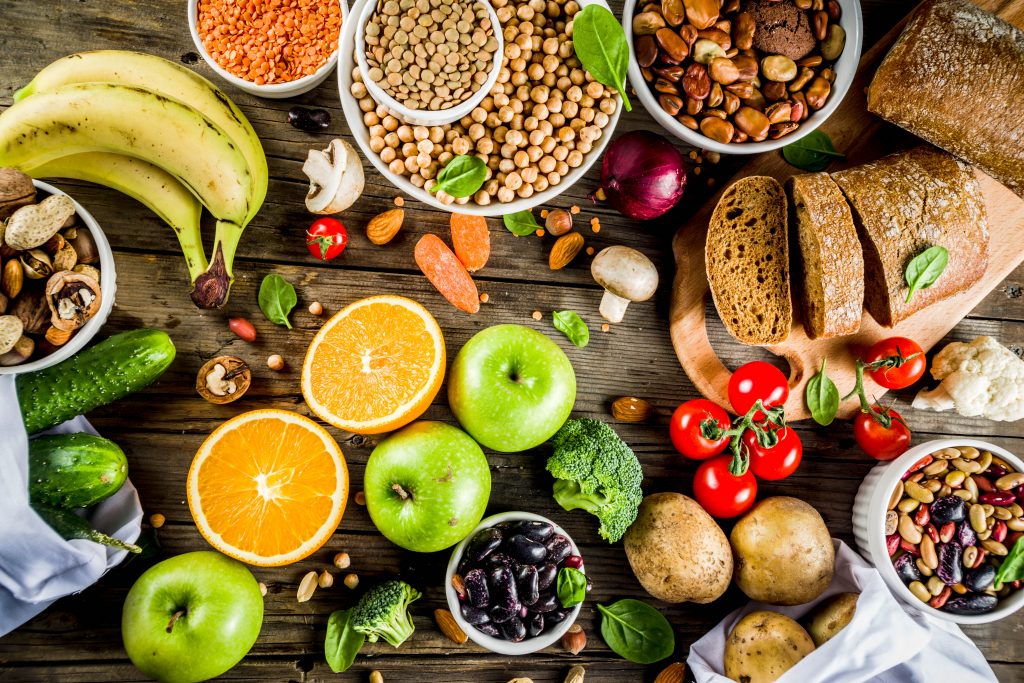
Research
⦁ Research on the antioxidant properties of raw materials and fruit and vegetable preserves (juices, drinks, jams).
⦁ Characteristics of the chemical composition and technological usefulness of new species and varieties of fruit and vegetables: highbush blueberry, haskap berry, Asian pear, winter squash, wild rose, sea buckthorn and dogwood.
⦁ Factors influencing the stability of anthocyanins in fruit and vegetable products.
⦁ Influence of technological factors and storage conditions on the quality of concentrated juices.
⦁ The use of natural plant extracts to enrich fruit preserves.
⦁ Evaluation of the technological value of various types of cereals (wheat, triticale, rye).
⦁ The impact of various agrotechnical treatments on the technological value of cereals (wheat, triticale, rye).
⦁ The use of non-bread grains in baking and confectionery.
⦁ Use of cereals from organic farming for the production of bread and pasta.
⦁ The influence of natural additives on the quality of bread and pastry products.
⦁ The effect of natural additives on the slowing down of the staling process of wheat bread.
⦁ Application of the deferred baking method to modify the technology of bread production.
⦁ Enzymatic reduction of FODMAP content in bakery products
Didactics
Appertisation
Ecology in food production
Freezing
Food storage
Minimally processed food
Baby Food
Polish superfruits
Food adulteration and methods of their detection
Snacks and non-alcoholic beverages
Propedautics of food industry plants
General food technology
Technological design of food industry plants
Technology of fruits and vegetables
Cereal technology
Basics of gastronomic technology
Modern technologies
Raw materials of plant origin
Processing of plant raw materials
Product quality assessment and logistics
Product design
Processing of organic plant raw materials
Sustainable food
Food processing waste
Commodity science of agricultural products – plant origin
Plant-based food technology and hygiene
Specialized technology:
⦁ Technical and analytical control in the fruit and vegetable industry,
⦁ Quality and technological suitability of fruits, vegetables, mushrooms and cereals,
⦁ Technology of semi-finished products and fruit and vegetable products (canned food, frozen food, dried fruit, juices and beverages, pickles, sweetened concentrates, wines, minimally processed fruit and vegetables, tomato products),
⦁ Technology of semi-finished products and cereal products (bakery intermediates, flours, groats, flakes, pasta, bread, confectionery products).
Cooperation with the environment
⦁ Consultations on the technology of processing fruit and vegetable raw materials and methods of testing the quality of preserves and food additives used in the fruit and vegetable industry.
⦁ Consultations on the technology of the cereal-milling and bakery industries as well as methods of testing the quality of raw materials and cereal products.
⦁ Physico-chemical analyzes of fruit and vegetables and their products:
⦁ Determination of color, turbidity, viscosity, density.
⦁ Determination of pH, extract content, total acidity, volatile acidity.
⦁ Determination of the content of dry substance, ash, ash alkalinity, substances insoluble in water, sand.
⦁ Determination of the content of direct reducing sugars and total sugars, chlorides, SO2, ethyl alcohol, starch.
⦁ Determination by spectrophotometric method of total pigments content (anthocyanins, carotenoids, chlorophylls, betacyanins), total polyphenols, polyphenyl oxidase activity, vitamin C content, antioxidant capacity (DPPH, ABTS, FRAP).
⦁ Determination by chromatographic method of the content of anthocyanins, carotenoids, phenolic acids, L-ascorbic and dehydroascorbic acids, vitamins B1, B2 and B6, organic acids, iridoids, hydroxymethylfurfural and sugars.
⦁ Physico-chemical analyzes of cereal raw materials and their products:
⦁ Determination of the physical properties of cereal grains (1000 grain weight, bulk density, accuracy, uniformity, glassiness, hardness).
⦁ Determination of the chemical composition of raw materials and cereal products (content: total protein, fat, ash).
⦁ Assessment of the quantity and quality of gluten in the Gluten Index system, assessment of the activity of amylolytic enzymes by the Hagberg-Perten method, laboratory grinding (Bühler, Quadrumat Senior and Junior mill).
⦁ Assessment of the rheological properties of the dough (farinograph, extensograph by Brabender, alveograph by Chopin).
⦁ Evaluation of the fermentation properties of the dough (SJA fermentograph).
⦁ Laboratory trial baking and evaluation of bread quality (bread volume, crumb texture – TA.XTi texture analyzer).
Apparatus
Liquid chromatograph with UV-Vis, DAD, RI, FLD detectors
Spectrophotometers
Color measuring device
Steam distillation device
Centrifuges, incubators, homogenizers, mixers, furnaces, dryers
Refractometers, titrators, turbidimeters
Viscometer, evaporator
SPE extraction device
Autoclave, Freeze dryer,
Basket and layer press
The cutter and the foot spreader
Microwave sterilizer
Device for grinding in liquid nitrogen
Device for sterile filling of beverages
Laboratory mill (Bühler)
Mill Quadrumat Junior and Senior (Brabender)
Granotest
SZD type separator, Vogel sieves
Glutomatic, Polarimeter, Farinograph
Laboratory and industrial mixers
Alveograph, Fermentograph and Amylograph
Apparatus for the determination of the falling number
Texture analyzer
Apparatus for the sedimentation number, 3D scanner
Nitrogen distillation apparatus
Dough divider and croissant device
Dough roller
Water activity determination kit
Division of Fats and Food Concentrates Technology
Head of the Division
dr inż. Katarzyna Ratusz
Tel: (22) 59 37 528
Fax: (22) 59 37 527
e-mail: katarzyna_ratusz@sggw.edu.pl
Employees
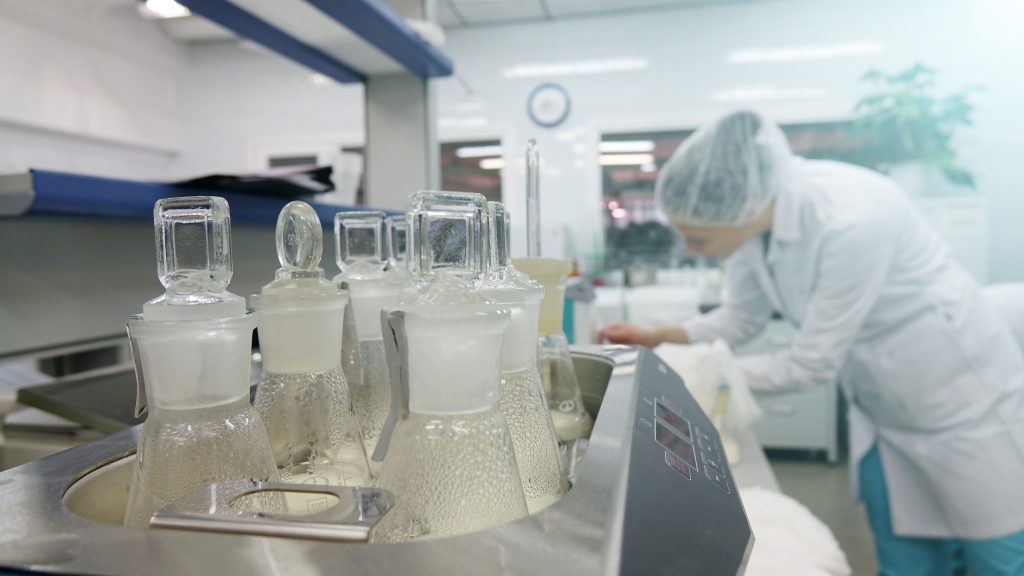
Research
⦁ Characteristics of cold pressed and refined oils.
⦁ Autoxidation of fats and methods of its reduction – the use of antioxidants.
⦁ Characteristics of frying, confectionery and confectionery fats.
⦁ Research on the impact of raw material and technological factors on quality:
⦁ cold-pressed oils (rapeseed, linseed, rydzowy, hemp and others)
⦁ gluten-free products
⦁ fried instant noodles
⦁ w/o and o/w emulsions
⦁ Use of food additives in the production of low-fat (emulsions and sauces) and high-fat products (confectionery, fried products, including instant noodles).
⦁ Characteristics and application of hydrocolloids in food production.
⦁ Production and characteristics of special foods (vegetarian, vegan, functional).
⦁ Study of the effectiveness of microencapsulation of flavors, dyes, edible oils and their stability.
⦁ Research on the impact of the type of packaging, packaging method, storage conditions on the quality of products
⦁ The use of food additives in food products.
⦁ The impact of storage conditions on the quality and safety of food products.
⦁ Utilization of food industry by-products
Didactics
Propaedeutics of the food industry
General Food Technology
Packaging
Wrapping
Packaging safety
Technology of Fats and Food Concentrates
Basics of Gastronomic Technology
Food commodity science
Commodity science of agricultural products of plant origin
Designing Food Industry Plants
Modern technologies
Raw materials of plant origin
Processing of raw materials of plant origin
Product quality assessment and logistics
Product design
Basics of the development of research results
Contemporary research trends in food technology
Alternative raw materials for the preparation of edible oils
Food additives
Food additives – health aspects
Food additives – technological aspects
Functional food
Fats in food technology
Basics of dietetics
Instant food
Special food
Cooperation with the environment
As part of its teaching and research activities, the Division cooperates extensively with:
- research units – e.g. Institute of Agricultural and Food Biotechnology in Warsaw, University of Life Sciences in Poznań, University of Life Sciences in Wrocław, University of Life Sciences in Lublin, University of Economics in Krakow, Institute of High Pressure Physics of the Polish Academy of Sciences, University of Technology and Humanities in Radom, University of Warmia and Mazury in Olsztyn;
- institutions of official control and analysis of food safety – e.g. National Health Institute – National Institute of Public Health, Chief Sanitary Inspectorate;
- economic environment entities – e.g. ZT Kruszwica S.A., Bunge Polska Sp. z o.o., Develey Polska Sp. z o.o., Cargill Poland Sp. z o.o.; LOTTE Wedel Sp. z o.o., Semco Sp. z o.o. Sp.k.; Tłocznia Kropla Omega, Tree nuts; Złoto Polskie – Family Business s.c., Ol’vita, WSP Społem in Kielce, Agra Forus sp. z o.o.
Oferta dla praktyki
⦁ Konsultacje dotyczące technologii tłuszczów jadalnych i koncentratów spożywczych oraz metod badania ich jakości.
⦁ Optymalizacja i modyfikowanie technologii otrzymywania tłuszczów, produktów tłuszczowych oraz koncentratów spożywczych.
⦁ Opracowanie innowacyjnych prozdrowotnych produktów spożywczych przy wykorzystaniu np. naturalnych przeciwutleniaczy, zamienników tłuszczu, błonnika, preparatów białkowych, cennych żywieniowo surowców odpadowych.
⦁ Konsultacje dotyczące projektowania, znakowania i możliwości wprowadzania na rynek innowacyjnych produktów spożywczych
⦁ Oznaczanie składu kwasów tłuszczowych (GC).
⦁ Oznaczanie stabilności oksydatywnej tłuszczów (Rancimat);
⦁ Ocena aktywności naturalnych i syntetycznych preparatów przeciwutleniających w olejach jadalnych (badania przechowalnicze, próby termostatowe, test DPPH, Rancimat).
⦁ Oznaczanie zawartości barwników w olejach metodą spektrofotometryczną, liczby anizydynowej, absorbancji w UV.
⦁ Oznaczanie zawartości tłuszczu (Soxhlet, Soxtec) i jakości chemicznej tłuszczu (liczba kwasowa, nadtlenowa).
⦁ Oznaczanie związków polarnych, punktu dymienia tłuszczów smażalniczych.
⦁ Oznaczanie zawartości białka (Kjeltec), zdolność wiązania wody i tłuszczu, badanie właściwości emulgujących, pianotwórczych, żelujących.
⦁ Badanie aktywności wody produktów spożywczych
⦁ Badanie barwy produktów spożywczych w systemie CieLab (Minolta)
⦁ Oznaczanie aktywności przeciwutleniającej, zawartości polifenoli i katechin w herbacie i kawie.
⦁ Badanie stabilności emulsji (Lumisizer, Reolaser).
⦁ Badanie parametrów tekstury (TextureAnalyser TA.XT plus) i lepkości produktów spożywczych (Brookfield DV2T).
Apparatus
Pracownie i laboratoria Zakładu Technologii Tłuszczów i Koncentratów Spożywczych wyposażone są w następujące urządzenia technologiczne:
suszarnia rozpyłowa z łożem fluidalnym, Armfield FT80;
ekstruder, Brabender;
piec konwekcyjno – parowy, UNOX;
pakowarka próżniowa, Empra;
homogenizator do otrzymywania emulsji – młynek koloidalny, PT MASZ;
homogenizator wysokociśnieniowy, APV;
homogenizator, SLIVERSON; roboty kuchenne, KitchenAid;
prasa ślimakowa do tłoczenia olejów na zimno, FARMET;
grill, GARLAND;
smażalnik, FRYMASTER;
jak również w sprzęt laboratoryjny pozwalający zbadać cechy jakościowe surowców oraz gotowych produktów tłuszczowych i koncentratów spożywczych m.in.:
aparat do badania stabilności emulsji Lumisizer, LUM;
aparat do badania stabilności emulsji Rheolaser Master, Formulation; r
heometr cyfrowy DV3 THA EXTRA, Brookfield;
teksturometr TA.XT2, STABLE MICRO SYSTEM;
aparat do oznaczania aktywności wody, PreAquaLab;
mikroskop, DeltaOptical;
aparat do oznaczania białka Kjeltec, Foss Tecator;
aparat do oznaczania zawartości tłuszczu – Soxtec, Foss Tecator;
aparat do oznaczania stabilności tłuszczów, Rancimat, METROHM;
chromatograf gazowy TRACE 1300, Thermo Scientific;
autosampler Al 1310, Thermo Scientific;
aparat do oznaczania punktu dymienia SYD-3536 Clevland Open Cup Flash Point Tester;
do pomiaru barwy i zawartości barwników chlorofilowych i karotenoidowych – spektrofotometr Helios β, Thermo Spectronic;
spektrofotometr UV-VIS Genesis 180, Termo Scientific;
kolorymetr przenośny i stacjonarny (pomiar w odbiciu i przeźroczu), KONICA MINOLTA;
dodatkowo – wagosuszarka MA 50.R, suszarki konwekcyjne laboratoryjne;
wirówki MPW –352, MPW;
a do prób przechowalniczych – termostat 2-komorowy, POL-ECO.